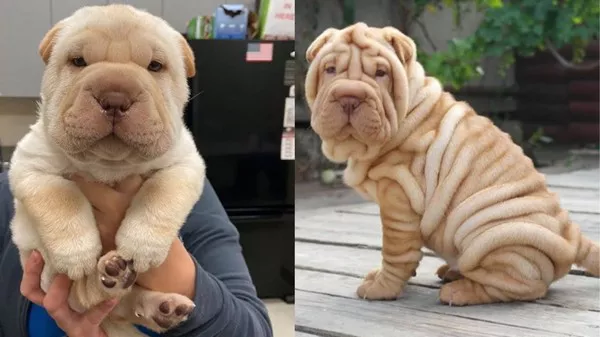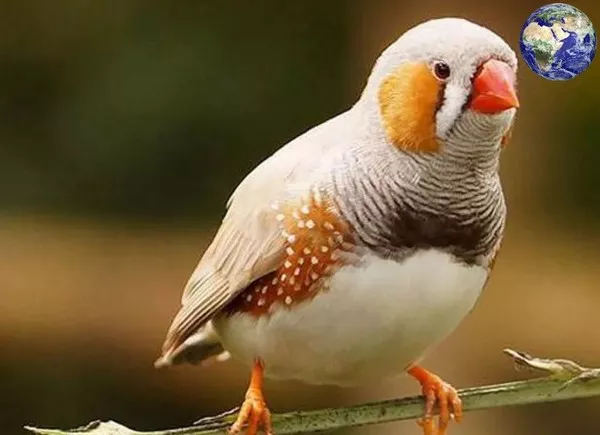Shar Peis, with their distinctive wrinkled skin and blue-black tongues, have captivated dog enthusiasts worldwide. Originating from China, this ancient breed boasts a rich history and unique characteristics that influence their value. When considering the worth of Shar Pei puppies, multiple factors come into play, including pedigree, health, and breeding practices. This comprehensive guide delves into these aspects to provide a detailed understanding of what determines the cost of a Shar Pei puppy.
What Are the Different Types of Shar Pei?
Shar Peis come in various types, each with distinct characteristics that can influence their market value. Understanding these types is crucial for prospective buyers and breeders alike.
Traditional vs Modern Shar Pei
Traditional Shar Pei:
Originating from Southern China, the traditional Shar Pei is also known as the “bone-mouth” Shar Pei.
They possess a more modest amount of wrinkles compared to their modern counterparts and have a more athletic build.
These dogs were historically used as farm and hunting dogs, valued for their versatility and endurance.
Modern Shar Pei:
The modern, or “meat-mouth” Shar Pei, is the more commonly recognized type today, characterized by heavy wrinkles and a broader, meatier muzzle.
Bred primarily for companionship and show, their appearance is more exaggerated, with a focus on the distinctive folds of skin.
Coat Types and Their Impact on Value
Horse Coat:
The horse coat is the original and most traditional type of Shar Pei coat. It is short, harsh, and prickly to the touch.
This coat type is less prone to skin issues but may not be as popular among those seeking a more visually dramatic appearance.
Brush Coat:
Brush coat Shar Peis have a longer and softer coat compared to the horse coat.
They are often more desirable in pet markets due to their softer texture and appearance.
Bear Coat:
The bear coat is the rarest and longest type of Shar Pei coat. This coat type is not recognized by many breed standards for show purposes.
Despite this, bear coat Shar Peis can command higher prices due to their unique and appealing look.
What Habits and Traits Affect a Shar Pei’s Value?
The habits and traits of Shar Peis, including their temperament and physical characteristics, play a significant role in determining their worth.
Temperament and Trainability
Temperament:
Shar Peis are known for their calm, independent, and sometimes aloof nature. They are loyal and protective, making them excellent watchdogs.
Their temperament can affect their value, as well-socialized and even-tempered puppies are more desirable.
Trainability:
While Shar Peis are intelligent, they can also be stubborn. Effective training requires patience and consistency.
Puppies from lines with a history of easy trainability and good behavior are often valued higher.
Health and Longevity
Common Health Issues:
Shar Peis are prone to certain health issues, including skin conditions (like pyoderma and mange), entropion (a condition where the eyelids roll inward), and hip dysplasia.
The presence or absence of these health issues in a puppy’s lineage can significantly affect their price.
Longevity:
Shar Peis typically live between 8 to 12 years. Puppies from lines with longer lifespans may be valued higher due to their genetic robustness.
Physical Characteristics
Wrinkles:
The amount and distribution of wrinkles can greatly influence a Shar Pei’s worth. Puppies with prominent, well-defined wrinkles are often more desirable.
However, excessive wrinkling can lead to health issues, so balance is key.
Color:
Shar Peis come in various colors, including fawn, black, cream, red, and blue. Certain rare colors, like blue or isabella, can fetch higher prices.
Coat color should conform to breed standards for show purposes, which can also influence value.
How Do Breeding Practices Influence Shar Pei Prices?
Breeding practices are paramount in determining the value of Shar Pei puppies. Ethical breeding, health screening, and adherence to breed standards are all critical factors.
Ethical Breeding and Lineage
Reputable Breeders:
Puppies from reputable breeders who prioritize health, temperament, and breed standards often command higher prices.
Ethical breeders conduct health screenings and genetic testing to ensure the puppies are free from hereditary conditions.
Lineage and Pedigree:
Puppies with a distinguished pedigree, especially those descended from champion lines, are highly valued.
Documentation of lineage through recognized breed registries can significantly enhance a puppy’s worth.
Health Testing and Guarantees
Health Screenings:
Comprehensive health screenings for conditions such as hip dysplasia, thyroid issues, and eye problems are essential.
Puppies with health clearances are more desirable and typically priced higher.
See Also: What Is a Blue Shar Pei?
Health Guarantees:
Many reputable breeders offer health guarantees, providing buyers with assurance against genetic disorders.
These guarantees add value to the puppies by mitigating future health-related expenses for buyers.
Show Potential
Conformation to Standards:
Puppies bred for show purposes are evaluated based on their conformation to breed standards set by kennel clubs.
Show-quality puppies, demonstrating superior physical and behavioral traits, are priced higher than those intended solely as pets.
Training and Socialization:
Early socialization and basic training can enhance a puppy’s value. Puppies that are well-adjusted to various environments and stimuli are more appealing to buyers.
What Are the Financial Implications of Owning a Shar Pei?
Owning a Shar Pei involves various ongoing expenses beyond the initial purchase price. Prospective owners should be aware of these costs to make an informed decision.
Initial Purchase Price
Price Range:
The cost of a Shar Pei puppy can vary widely based on the factors discussed. Prices typically range from $1,000 to $3,000.
Puppies from champion lines or with rare coat colors may exceed this range.
Veterinary Costs
Routine Care:
Regular veterinary visits for vaccinations, check-ups, and preventive care are essential.
Annual veterinary costs can range from $300 to $600, depending on the region and specific needs of the dog.
Health Issues:
Given their predisposition to certain health conditions, Shar Peis may incur additional veterinary expenses.
Owners should budget for potential treatments for skin issues, eye surgeries, and other common health problems.
Feeding and Nutrition
Diet Requirements:
Shar Peis benefit from high-quality, balanced diets tailored to their specific needs.
Monthly food expenses can range from $50 to $100, depending on the brand and dietary requirements.
Supplements:
Nutritional supplements for skin and joint health can be beneficial, adding to the overall cost.
Owners should consider the potential need for supplements in their budgeting.
Grooming and Maintenance
Grooming Needs:
Regular grooming, including bathing, nail trimming, and ear cleaning, is necessary to maintain a Shar Pei’s health and appearance.
Professional grooming sessions can cost between $40 and $70 per visit.
Skin Care:
Due to their unique skin folds, Shar Peis require diligent skin care to prevent infections.
Owners may need to invest in specialized skin care products, adding to the maintenance costs.
Conclusion
The value of Shar Pei puppies is influenced by a multitude of factors, including their type, health, temperament, and the breeding practices of their origin. Prospective owners should thoroughly research and consider these aspects to ensure they make an informed decision. Beyond the initial purchase price, ongoing expenses such as veterinary care, nutrition, and grooming should also be taken into account. By understanding the various elements that contribute to a Shar Pei’s worth, potential buyers can appreciate the investment involved in welcoming one of these unique and endearing dogs into their homes.
Related Topics:


























